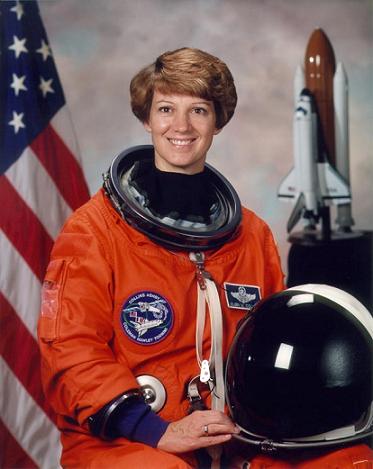Crew members will practice techniques for plugging holes in the side of the shuttle in space
Avi Blizovsky

Direct link to this page: https://www.hayadan.org.il/shuttle010305.html
Shuttle Discovery commander Eileen Collins says the next shuttle mission will set new standards for safety.
"This will be the safest flight that NASA has ever flown," she said in an interview with CNN, referring to the research and development carried out in the two and a half years that have passed since the Columbia disaster. "We have a lot of training to do, but we will be ready to fly on May 15." Collins said.
Astronauts Soichi Noguchi and Steve Robinson spent over six hours last Thursday in simulations of the three spacewalks they will perform during the 12 days of the mission. Only a portion of one of these walks and some of the time inside the shuttle Discovery will be used to test repair techniques that NASA hopes will help repair any holes that may develop in the thermal system that protects the shuttle during reentry. Among the most promising repair techniques, three are for the ceramic tiles and one for the reinforced carbon that protects the shuttle's critical parts from the immense heat upon entering the atmosphere. A gray reflective liquid will be tried in two areas as a replacement cover if one of the tiles loses its black reflective cover, and as a precursor to the tile fixer - a kind of material that will fill the gaps between the tiles. A third technique for repairing the tiles - which clamps what looks like metal sheets over missing tiles - this technique will not be attempted because it could release toxic particles from the tiles into the air inside the spacecraft. NASA is still looking at ways to plug holes the size of the one that caused the Columbia crash.
To prevent a repeat of the problem, NASA focused on preventing the outer containers from being hit with foam large enough to cause damage. The redesigned container arrived from Lockheed-Martin's facility in Louisiana, and is now expecting to dock with the shuttle at the Kennedy Space Center in Florida.
NASA engineers say they are close to being able to repair 10-centimeter-diameter holes in the reinforcement panels, using a security layer that is bolted firmly to the wing. Discovery will also carry an extension to its arm that will allow astronauts for the first time to observe critical parts of the spacecraft without risking dangerous spacewalks. The "boom", as the new part is called, contains a camera and lasers at the end, which were designed to provide the crew members with a view inside and the engineers on the ground with a view of extremely tiny cracks - 1 ten thousandths of a centimeter. The engineers said they were confident in the new techniques, but they had only been tested in a laboratory on Earth. If shuttle project managers decide the shuttle has a problem that cannot be fixed, the seven astronauts will join the two astronauts aboard the International Space Station for a rescue spacecraft. Atlantis, which is being prepared for launch at the same time as Discovery, will serve as a rescue shuttle if necessary. Atlantis is scheduled for launch on July 12.
For news on CNN
Ydan return to the flight
https://www.hayadan.org.il/BuildaGate4/general2/data_card.php?Cat=~~~95412113~~~188&SiteName=hayadan
